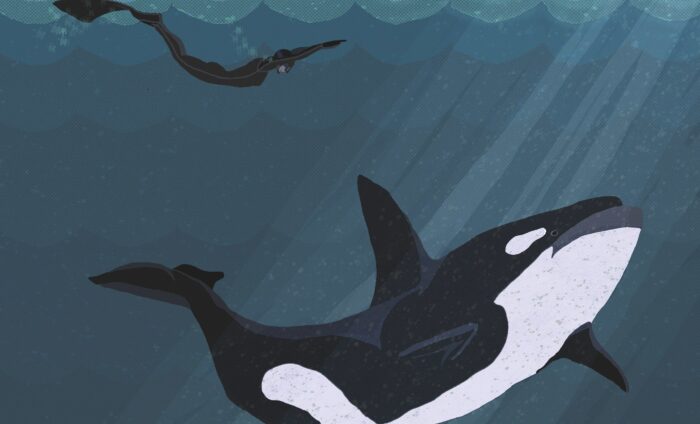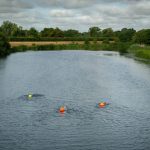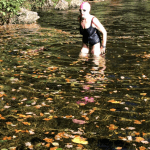
Orca: the apex predator of all the seas
The Tlingit, whose territory is in the Pacific Northwest coast of North America have a legend about the origin of orca (Orcinus orca) that is in accordance with the absence of written records of anyone being killed by a wild orca. A hunter called Natsilane carved a black fish out of wood, which came to life when launched in the sea. He ordered black fish to kill his fickle brother-in-laws who had abandoned him on a deserted island. When this was done he then instructed the black fish to never harm humans again. Blackfish, or orca, or killer whale are revered in Tlingit culture as a powerful force of nature with an affinity for humans.
Consummate hunters
Orcas are consummate hunters with a wide and inventive repertoire of hunting techniques. They spit fish onto the surface of water as bait for seagulls. Working in teams they make waves wash over ice floes in order to push seals taking refuge on them into the sea. They catch great white sharks to eat their livers that are a rich source of squalene, a precursor for synthesising hormones. Catching a person from a kayak or canoe would be well within the skills of an orca. Yet while mythology of the Pacific Northwest attributes power and strength to orcas they are not feared and it is considered auspicious to see them.
Orcas have their own language of clicks, whistles and calls, and also imitate new sounds and use them in appropriate settings, ie, they are one of the few species alongside humans that have vocal learning, a cognitive ability that underpins language. Living in matriarchal family groups they travel together in pods consisting of extended family. Pods sharing similar calls are referred to as clans. They adhere to group traditions from which fish they eat to behaviours such as greeting ceremonies. (Salish sea resident orcas line up in two rows and then pile in to jostle each other – an orca moshpit). No surprise then that captive orcas, deprived of their rich cultural landscape are not representative of wild orcas’ behaviour, and people have been killed by captive orcas.
Britain’s resident group
Orcas are the aquatic mammal with the widest distribution. They are found in all oceans from the Aleutian Islands to Antarctica. Britain has a small resident group of orcas the live on Scotland’s west coast. This group is unlikely to persist as they have not produced a calf for more than 25 years. Their reproductive failures may be due to polychlorinated biphenyls (PCBs) that were phased out of use from 1979 to 2000, as they are toxic to humans and animals, but still contaminate European waters. Last year a killer whale from the west coast group died after being entangled in fishing lines. Levels of PCBs in her body were 20 times higher than the threshold at which physiological effects are caused. Most orcas seen in British waters are visitors from Iceland.
Where to see orca
It might be more relaxing to see near 7 metre long 6 tonne apex predators from dry land. Or a large boat. May to July is the peak season for sightings in Orkney and Shetland.
· Duncansby Head, Caithness, Scotland
· Cantick Head, Hoy, Orkney
· Noup Head, Westray, Orkney
· Sumburgh Head, The Mainland, Shetland
· Mousa sound, The Mainland, Shetland
Swimming and Wildlife by Susanne Masters with illustrations by Alice Goodridge is a monthly feature in Outdoor Swimmer Magazine.








